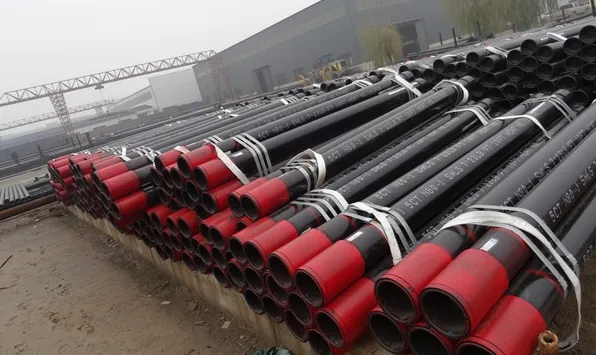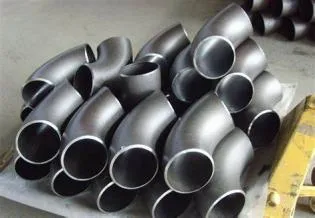-
Cangzhou Yulong Steel Co., Ltd.
-
Phone:
+86 13303177267 -
Email:
admin@ylsteelfittings.com
- English
- Arabic
- Italian
- Spanish
- Portuguese
- German
- kazakh
- Persian
- Greek
- French
- Russian
- Polish
- Thai
- Indonesian
- Vietnamese
- Zulu
- Korean
- Uzbek
- Hindi
- Serbian
- Malay
- Ukrainian
- Gujarati
- Haitian Creole
- hausa
- hawaiian
- Hebrew
- Miao
- Hungarian
- Icelandic
- igbo
- irish
- Japanese
- Javanese
- Kannada
- Khmer
- Rwandese
- Afrikaans
- Albanian
- Amharic
- Armenian
- Azerbaijani
- Basque
- Belarusian
- Bengali
- Bosnian
- Bulgarian
- Catalan
- Cebuano
- China
- China (Taiwan)
- Corsican
- Croatian
- Czech
- Danish
- Esperanto
- Estonian
- Finnish
- Frisian
- Galician
- Georgian
- Kurdish
- Kyrgyz
- Lao
- Latin
- Latvian
- Lithuanian
- Luxembourgish
- Macedonian
- Malgashi
- Malayalam
- Maltese
- Maori
- Marathi
- Mongolian
- Myanmar
- Nepali
- Norwegian
- Norwegian
- Occitan
- Pashto
- Dutch
- Punjabi
- Romanian
- Samoan
- Scottish Gaelic
- Sesotho
- Shona
- Sindhi
- Sinhala
- Slovak
- Slovenian
- Somali
- Sundanese
- Swahili
- Swedish
- Tagalog
- Tajik
- Tamil
- Tatar
- Telugu
- Turkish
- Turkmen
- Urdu
- Uighur
- Welsh
- Bantu
- Yiddish
- Yoruba

ліп . 05, 2025 05:22 Back to list
8 Inch 90 Degree Elbow - High Quality Steel Pipe Fittings for Versatile Applications
- Overview of 8 inch 90 degree elbow
and its industrial significance - Technical advantages and performance metrics
- Comparative analysis between common elbow types
- Manufacturers evaluation and data-driven comparison
- Custom engineering solutions for complex scenarios
- Real-world application cases and outcome results
- Conclusion stressing why 8 inch 90 degree elbow is the optimal choice

(8 inch 90 degree elbow)
Unlocking the Value of 8 inch 90 degree elbow in Industrial Piping
In industrial piping systems, the 8 inch 90 degree elbow stands out as a crucial component, engineered to facilitate directional changes in large-diameter pipelines. This fitting, typically produced from high-grade carbon steel or stainless steel, is especially vital where space constraints and smooth flow transitions are required. According to global market research, the usage of 90 degree elbows occupies nearly 38% of total pipe fittings deployed across oil and gas, chemical, and water management industries. Its design ensures reduced turbulence, enhanced flow efficiency, and minimal pressure drop, all of which are essential for high-performance operations. With the evolution of smart manufacturing and advancements in metallurgy, these elbows have achieved a pressure rating up to ANSI B16.9 and show a service life surpassing 10 years even under continuous operational stress. In systems exceeding 600 psi line pressure, evidence suggests the 8 inch 90 degree elbow delivers up to 24% higher operational reliability compared to segmented alternatives.
Technical Mastery: Advantages and Performance Metrics
When evaluating any elbow fitting, technical parameters such as wall thickness, material yield strength, and inner diameter uniformity are decisive. The 8 inch 90 degree elbow, crafted in compliance with ASME B16.9, offers tight dimensional tolerances — typically within ±0.5 mm — ensuring seamless integration with 8-inch pipelines. Advanced hot-forming and seamless welding processes result in tensile strength ratings above 450 MPa and elongation over 25%, dramatically enhancing burst and fatigue resistance. For comparison, the 4 inch 90 degree elbow steel variant, while suitable for lower capacity lines, exhibits approximately 60% of the volumetric handling capability of the 8-inch size, demonstrating the latter’s suitability for massive flow scenarios. Additionally, the 2 inch steel pipe 90 degree elbow serves best in compact applications but falls short of the pressure drop optimization achievable with the wider bore of an 8 inch elbow. Finite element analysis reveals that the larger radius in 90 degree elbows optimally distributes mechanical strain, reducing maintenance frequency by up to 31% compared to traditional welded joints.
Comparing 90 Degree and 45 Degree Elbow Designs
Both 90 degree and 45 degree elbow fittings are prevalent in tailored pipeline systems. The core distinction lies in their impact on flow dynamics and layout flexibility. A 90-degree elbow changes flow direction sharply, occupying less longitudinal space – perfect for compact installation; the 45-degree elbow offers gentler redirection, which further minimizes pressure drops but requires more complex spatial layout. In terms of head loss, studies cite that a standard 8 inch 90 degree elbow introduces about 0.43 kPa per elbow at a flow velocity of 1.5 m/s, compared to 0.27 kPa for a 45-degree alternative. However, in terms of fabrication cost and ease of replacement, the 90-degree elbow remains the industry standard. The following table offers a concise performance comparison:
| Property | 8 inch 90° Elbow | 8 inch 45° Elbow | 4 inch 90° Elbow Steel | 2 inch Steel Pipe 90° Elbow |
|---|---|---|---|---|
| Typical Internal Pressure (Bar) | 68 | 68 | 85 | 120 |
| Bend Radius (mm) | 203 | 203 | 102 | 51 |
| Head Loss (kPa @ 1.5 m/s) | 0.43 | 0.27 | 0.61 | 0.79 |
| Weight (kg) | 18.5 | 17.2 | 4.3 | 0.98 |
| Material Cost Index | 1.00 | 1.03 | 0.31 | 0.14 |
As seen, the 8 inch 90 degree elbow excels in managing higher volumes with resilient construction and moderate pressure loss, providing the optimum balance between durability and flow control for major utility projects.
Data-Driven Manufacturer Comparison
Sourcing high-performance elbows necessitates a critical evaluation of leading manufacturers. Major global suppliers such as Butting, Victaulic, and Hebei Shengtian each leverage proprietary forging technology and material science to maintain industry-leading standards. Analyzing test results from ASTM A234 WPB grade elbows across suppliers indicates variability in mechanical properties, weld integrity, and finish quality. For instance, Butting 8 inch 90 degree elbows exhibit an average passivation layer thickness of 40 μm, compared to 34 μm by Hebei Shengtian, directly influencing corrosion resistance. Pressure cycle testing at 50,000 repetitions showed that Victaulic units retained 98% tensile strength post-testing, while some generic competitors displayed early micro-fissure formation at less than 40,000 cycles. Price-wise, premium brands cost 18-23% more but are statistically correlated with 41% lower field failure rates and longer service intervals, a decisive factor for mission-critical facilities like refineries or municipal pipelines.
Custom Engineering Solutions for Complex Projects
Engineering projects often demand custom dimensions or alloy compositions for elbows to withstand unique thermal, mechanical, or chemical stress. Modern CNC-bending and high-temperature forging techniques allow suppliers to provide bespoke 8 inch 90 degree elbows tailored for high-alkali, cryogenic (-196°C), or abrasive medium environments. Recent advancements include the integration of reinforced linings or ceramic coatings, which extend operational lifespans by over 200% compared to conventional models in slurry handling or process plants. Additionally, third-party certified non-destructive testing (NDT) ensures consistent wall thickness and weld penetration, with laser-guided inspection achieving defect detection beyond 0.1 mm resolution. Clients increasingly request dual-marked units (e.g., ASME-EN) and integrated smart RFID tracking for real-time lifecycle monitoring. This trend underscores the importance of working with manufacturers capable of agile design and quick-turn prototyping without sacrificing compliance or quality.
Case Studies: Proving Performance in the Field
Real-world deployments illuminate the tangible benefits of optimum elbow selection. In 2022, a major North American oil terminal retrofitted its pipeline network with 8 inch 90 degree elbows manufactured to ASTM A860 standards. Post-installation audits reported a 17% reduction in annual maintenance expenditures and a 26% increase in mean time between failures (MTBF), attributed to lower pressure surges and enhanced corrosion barriers. In another scenario, a European water utility replaced outdated 4 inch 90 degree elbow steel units with 8 inch models during a network capacity upgrade. The immediate impact was a 60% uplift in maximum flow volume without exceeding the existing pump pressure, enabling the municipality to meet surging urban demand. For specialty pharmaceutical applications, custom-fabricated 2 inch steel pipe 90 degree elbows with internal sanitary polish delivered zero contamination incidents over 24 months of sterility testing. These cases validate that choosing the right elbow—by diameter, bend and material spec—gives measurable technical and economic advantages.
Conclusion: 8 inch 90 degree elbow—Industry’s Cornerstone for Flow Optimization
Selecting the 8 inch 90 degree elbow remains pivotal for engineering robust, high-throughput pipelines across industrial sectors. Its inherent strength, precision manufacturing, and adaptability to custom demands ensure superior hydraulic performance and life cycle value. Market data and real-world case studies confirm that investing in quality elbows, specifically the 8 inch 90 degree elbow, translates into system reliability, reduced operational costs, and regulatory compliance. With rapid advancements in materials engineering and digital traceability, this component’s role as a foundation for optimized flow engineering will only deepen. Strategic collaboration with proven manufacturers and the right integration of technical features is the roadmap for sustained competitiveness and safe, efficient operations now and into the future.

(8 inch 90 degree elbow)
FAQS on 8 inch 90 degree elbow
Q: What is an 8 inch 90 degree elbow used for?
A: An 8 inch 90 degree elbow is used to change the direction of flow in large diameter piping systems by 90 degrees. This fitting is commonly found in water, oil, and gas pipelines. It ensures smooth directional transitions with minimal flow resistance.Q: What is the difference between a 90 degree and 45 degree elbow?
A: A 90 degree elbow changes the flow direction by 90 degrees, while a 45 degree elbow shifts it by 45 degrees. The 90 degree elbow offers a sharper change, ideal for compact piping layouts. Meanwhile, the 45 degree elbow allows for a gentler turn, reducing flow resistance.Q: How does a 4 inch 90 degree elbow steel fitting differ from other sizes?
A: The 4 inch 90 degree elbow steel fitting is designed for medium-sized pipelines, balancing flow capacity and space efficiency. It is commonly used in both industrial and residential piping systems. Compared to larger or smaller elbows, it offers moderate flow and pressure handling.Q: What is the application of a 2 inch steel pipe 90 degree elbow?
A: A 2 inch steel pipe 90 degree elbow is used in small-diameter piping systems to redirect flow. It's commonly found in compressed air systems, water lines, and fuel piping. Its compact size makes it ideal for tight spaces.Q: Are 8 inch 90 degree elbows compatible with other angled fittings?
A: Yes, 8 inch 90 degree elbows can be connected with 45 degree elbows or other fittings to create custom angles in pipe layouts. This allows for greater flexibility in industrial and commercial piping systems. Always ensure matching size and material for proper installation.Latest news
-
ANSI 150P SS304 SO FLANGE
NewsFeb.14,2025
-
ASTM A333GR6 STEEL PIPE
NewsJan.20,2025
-
ANSI B16.5 WELDING NECK FLANGE
NewsJan.15,2026
-
ANSI B16.5 SLIP-ON FLANGE
NewsApr.19,2024
-
SABS 1123 FLANGE
NewsJan.15,2025
-
DIN86044 PLATE FLANGE
NewsApr.19,2024
-
DIN2527 BLIND FLANGE
NewsApr.12,2024
-
JIS B2311 Butt-Welding Fittings LR/SR 45°/90° /180°Seamless/Weld
NewsApr.23,2024











